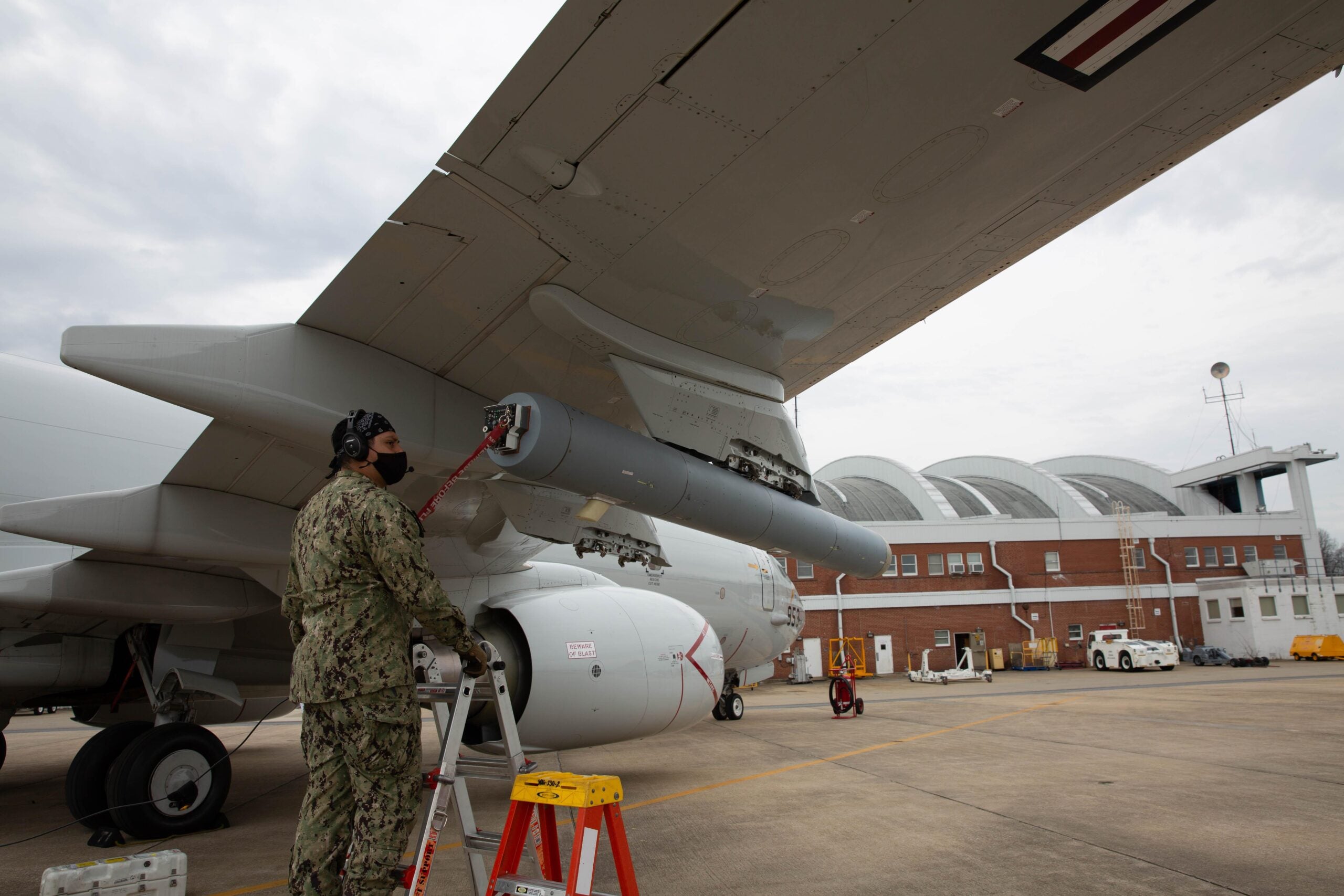
US Navy has announced that an Air Test and Evaluation Squadron (VX) 20 P-8A Poseidon maritime patrol aircraft (MPA) successfully completed an ‘airworthiness test of a pod-mounted radio frequency countermeasure (RFCM) prototype’.
The airworthiness test was completed at the Naval Air Warfare Center Aircraft Division (NAWCAD) Atlantic Test Ranges on 12 March.
According to a press statement released by NAVAIR, the advanced RF defence decoy is designed to allow the P-8A to ‘thwart enemy radio frequency missile attacks’.
NAWCAD Aircraft Prototype Systems Division leading project engineer Michael Hansell said: “A lot of the challenge and effort went into designing, to our best estimates, for what BAE was expected to put in the pod.
“We had to adapt and redesign rapidly. We worked as fast as possible to support PMA-290 and RPED to make sure we could pivot and adjust to meet established timelines.”
Constant changes were needed in the implementation as the teams ‘continued to hone in on a capable design’.
How well do you really know your competitors?
Access the most comprehensive Company Profiles on the market, powered by GlobalData. Save hours of research. Gain competitive edge.

Thank you!
Your download email will arrive shortly
Not ready to buy yet? Download a free sample
We are confident about the unique quality of our Company Profiles. However, we want you to make the most beneficial decision for your business, so we offer a free sample that you can download by submitting the below form
By GlobalDataThe P-8A is a long-range anti-submarine and anti-surface warfare (ASW) aircraft used by the US Navy.
It is a military derivative of the Boeing 737 Next-Generation aeroplane and features a modern open mission system architecture, bomb bay and pylons for weapons.
APSD project lead James Sherman said: “Michael Hansell and his team’s flexibility and willingness to go above and beyond, to work through issues and prepare for BAE, was key in getting (the pod design and build) done in a timely manner.”
After the testing, the pod went to Naval Air Weapons Station (NAWS) China Lake in California where it successfully completed effectiveness testing during 21-26 March.
The pod will now continue to be tested at a system level leading to ‘platform integration’ via ‘planned capability fielding phases’.







